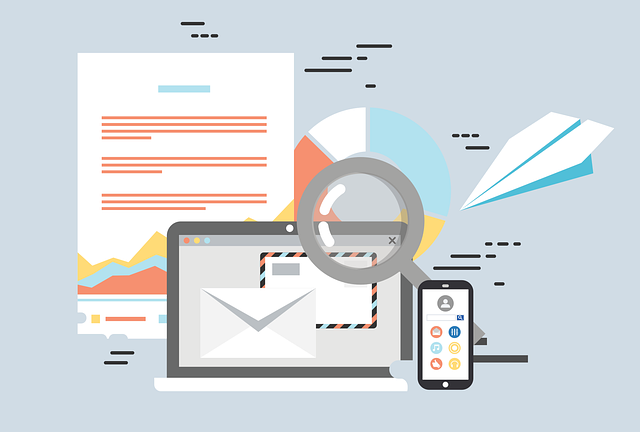The Truth About E-Mail Marketing: Is It Dead or Thriving?

Is e-Mail Marketing dead? YES or NO, Part II
Is e-mail marketing dead? If you think it is, you might want to check your inbox. In 2023, e-mail marketing still boasts an impressive ROI of $42 for every dollar spent. That’s like finding a $20 bill in your old jeans—unexpected and delightful! So, let’s dive into the world of e-mail marketing and explore why it’s far from being a relic of the past.
Why E-Mail Marketing is Still Thriving
First off, let’s address the elephant in the room: social media. Many believe that platforms like Instagram and TikTok have overshadowed e-mail marketing. But here’s the kicker: e-mail is still the preferred channel for receiving promotional content. A study by HubSpot revealed that 78% of consumers prefer to receive marketing communications through e-mail. That’s a staggering number! 📧
Moreover, e-mail marketing allows for a level of personalization that social media simply can’t match. With advanced segmentation and targeting, brands can send tailored messages to specific audiences. This means higher engagement rates and, ultimately, more conversions. Think of it as a tailored suit versus off-the-rack clothing—one fits perfectly, while the other is just okay.
Automation: The Secret Sauce
Let’s talk about automation. E-mail marketing platforms like Mailchimp and ActiveCampaign have made it easier than ever to set up automated campaigns. Imagine sending a welcome e-mail to new subscribers while you’re sipping coffee on a Sunday morning. ☕ Here are some automation strategies that can supercharge your e-mail marketing:
- Welcome Series: Greet new subscribers with a series of e-mails that introduce your brand and offerings.
- Abandoned Cart Reminders: Send gentle nudges to customers who left items in their cart, reminding them to complete their purchase.
- Re-engagement Campaigns: Win back inactive subscribers with special offers or updates about what they’ve missed.
These automated workflows not only save time but also keep your audience engaged without constant manual effort. It’s like having a personal assistant who never sleeps!
Data-Driven Decisions
In the age of big data, e-mail marketing thrives on analytics. Brands can track open rates, click-through rates, and conversion rates to refine their strategies. This data-driven approach allows marketers to make informed decisions. For instance, if you notice that your subject lines with emojis have a higher open rate, you can double down on that strategy. 📊
Take the case of a small e-commerce brand that used A/B testing on their subject lines. By experimenting with different styles, they discovered that playful language increased their open rates by 20%. This kind of insight is invaluable and shows that e-mail marketing is not just about sending messages; it’s about sending the right messages.
Integrating E-Mail with Other Channels
Another reason e-mail marketing is alive and kicking is its ability to integrate seamlessly with other marketing channels. Think of it as the glue that holds your marketing strategy together. For example, you can use social media to drive traffic to your e-mail sign-up page. Or, you can promote your latest e-mail campaign on your website. This cross-channel synergy amplifies your reach and effectiveness.
Consider a brand that runs a social media contest. They can require participants to sign up for their e-mail list to enter. This not only boosts their subscriber count but also creates a buzz around their brand. It’s a win-win! 🎉
Challenges and Misconceptions
Of course, e-mail marketing isn’t without its challenges. One common misconception is that people don’t want to receive marketing e-mails. In reality, it’s not that they don’t want them; it’s that they don’t want irrelevant content. The key is to provide value. If your e-mails are informative, entertaining, or offer exclusive deals, subscribers will look forward to them.
Another challenge is the issue of deliverability. E-mails can end up in spam folders if not properly managed. To avoid this, ensure you’re following best practices, such as using double opt-in methods and maintaining a clean list. It’s like keeping your house tidy; a little effort goes a long way in making a good impression.
Future Trends in E-Mail Marketing
So, what does the future hold for e-mail marketing? Here are some trends to keep an eye on:
- Interactive E-mails: Think polls, quizzes, and carousels that engage users directly within the e-mail.
- AI-Powered Personalization: Using AI to analyze user behavior and tailor content even more precisely.
- Mobile Optimization: With more people checking e-mails on their phones, mobile-friendly designs are crucial.
These trends indicate that e-mail marketing is evolving, not dying. It’s adapting to meet the needs of modern consumers, and that’s a good sign for its longevity.
Conclusion
So, is e-mail marketing dead? Absolutely not! It’s alive, kicking, and evolving. With its impressive ROI, automation capabilities, and data-driven insights, e-mail marketing remains a powerful tool in any marketer’s arsenal. As long as brands focus on delivering value and staying relevant, e-mail will continue to thrive. So, dust off that e-mail list and get ready to engage your audience like never before! 🚀





